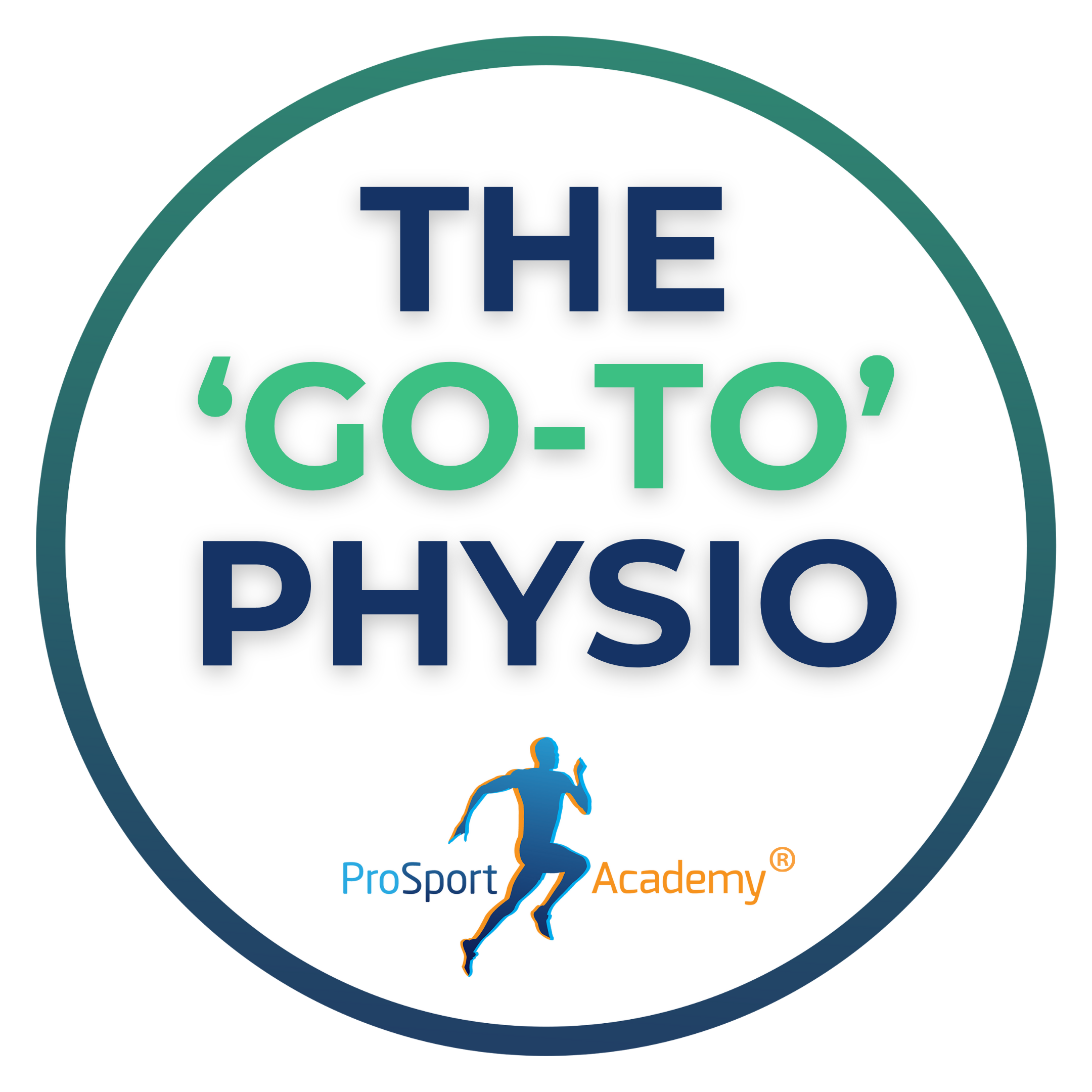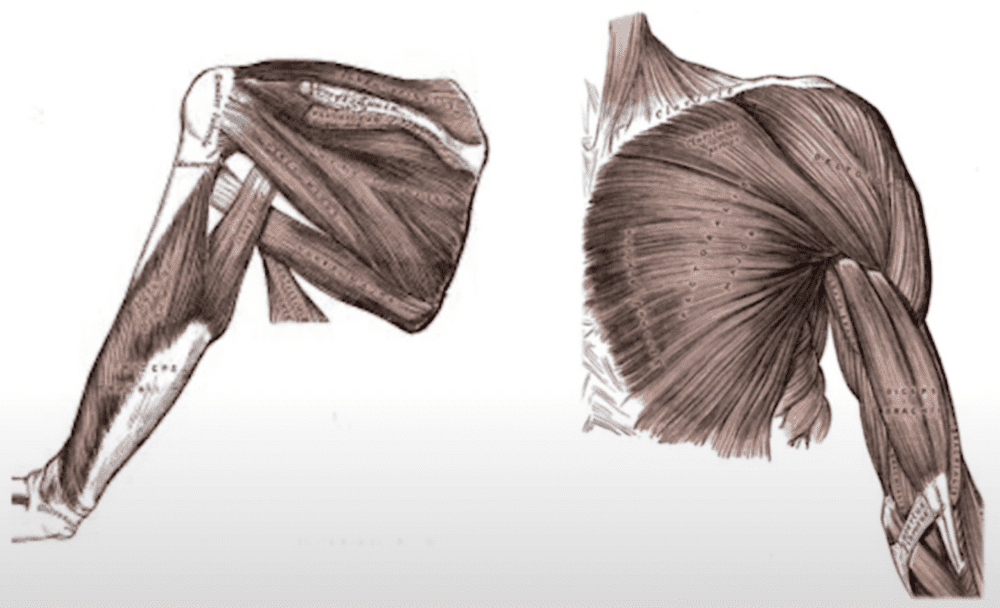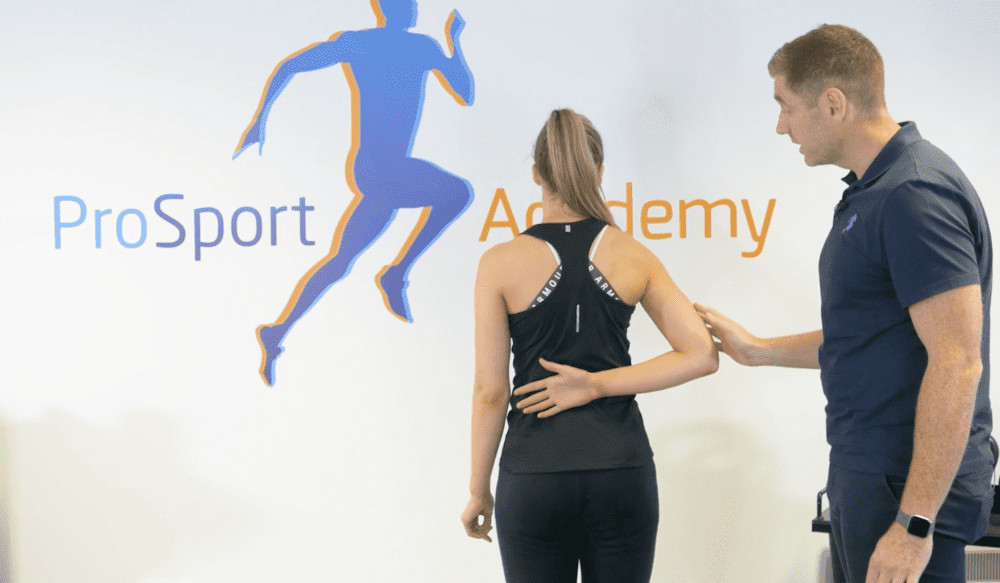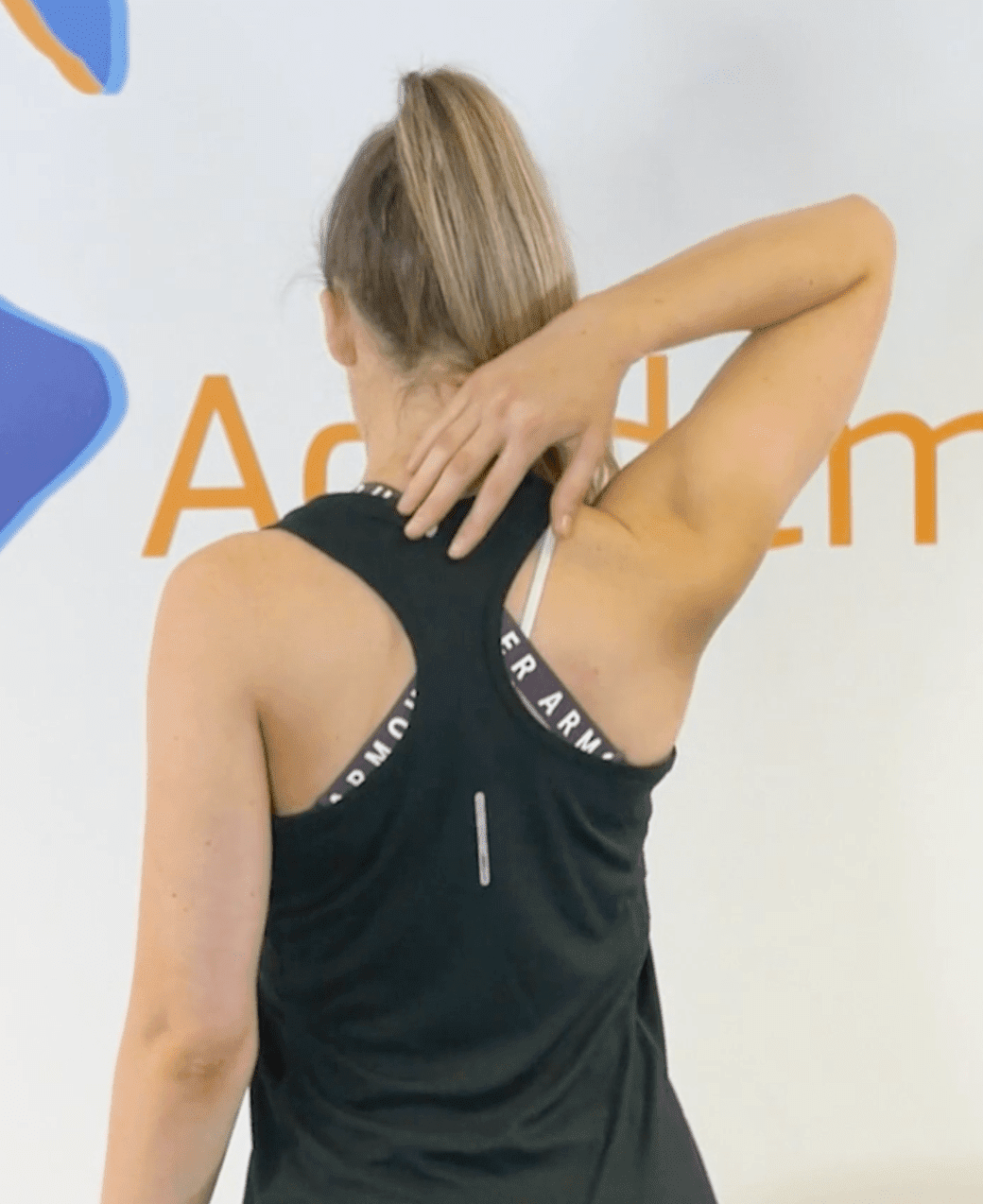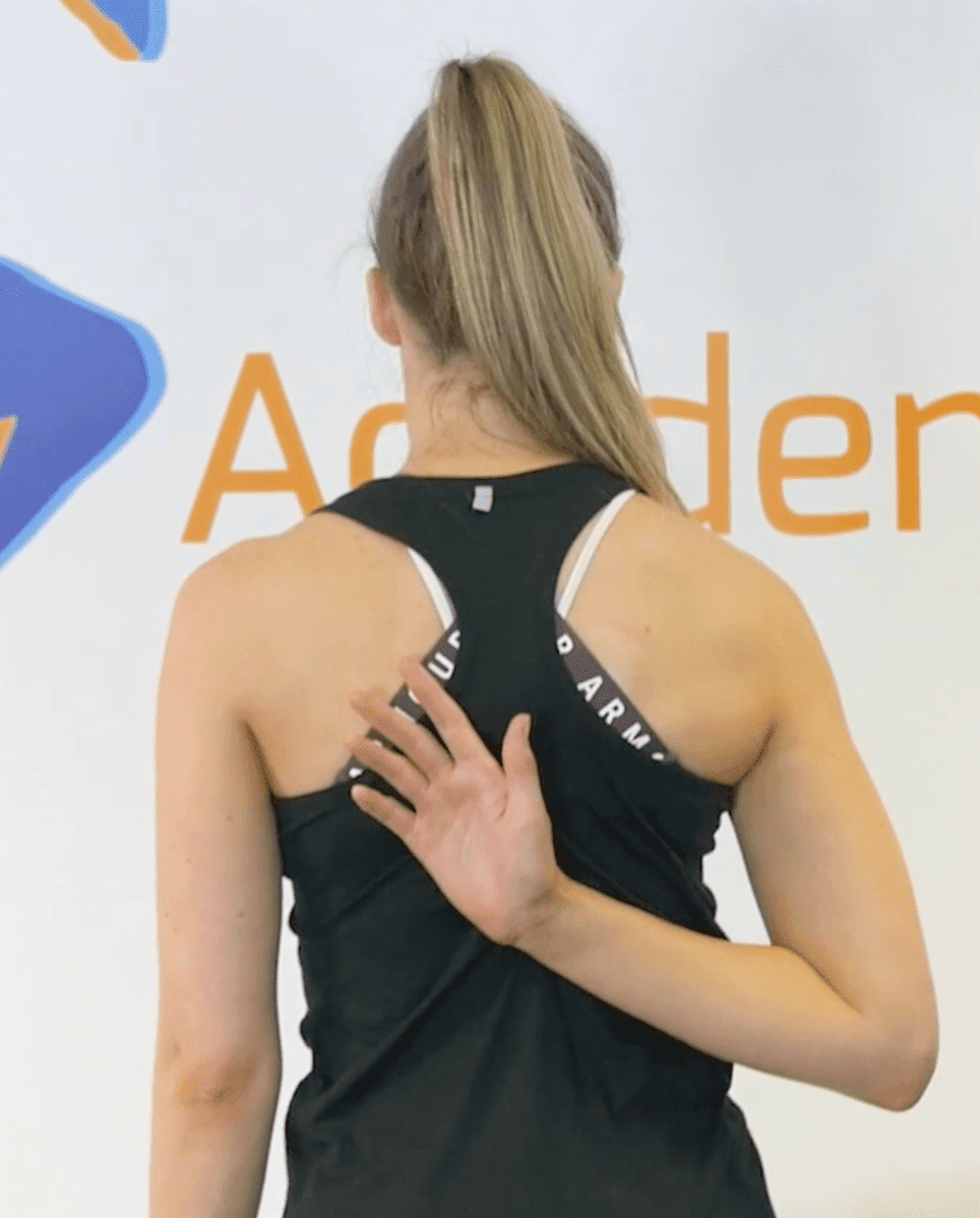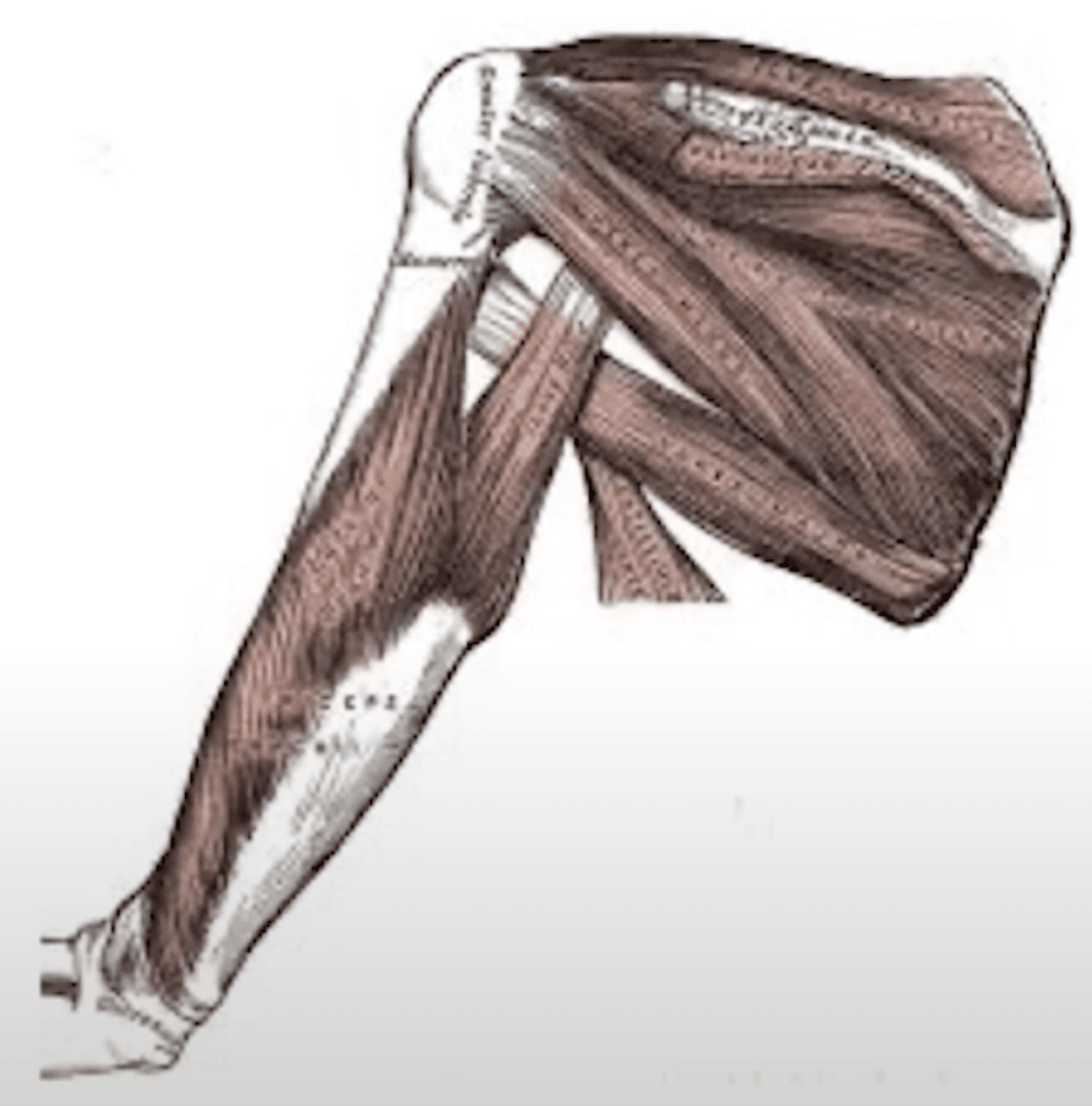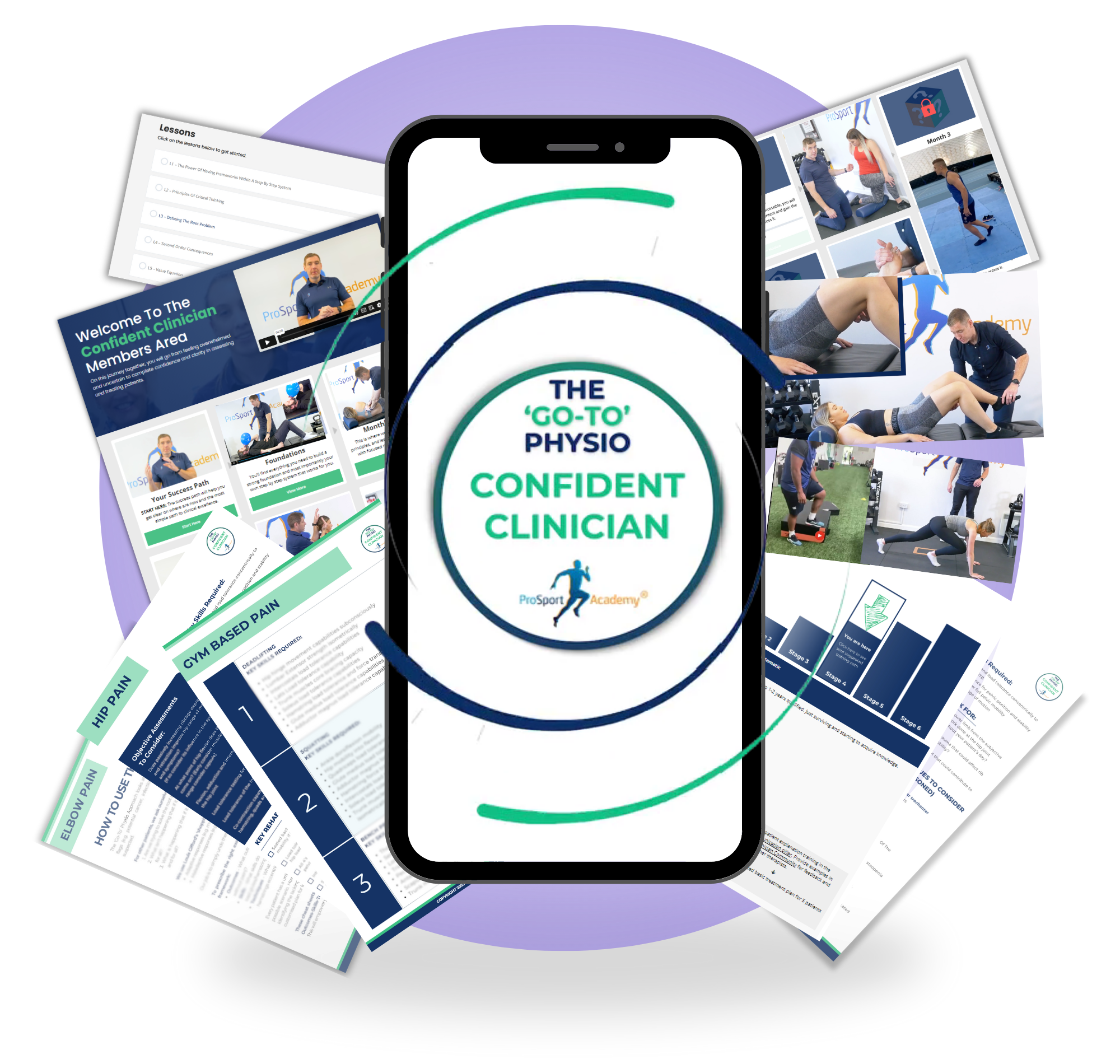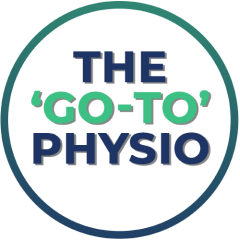Every therapist will use the Apley scratch test but most struggle to make this simple test work for them. They just don’t have the confidence or clarity, and trust me, when you don’t have the confidence a patient can tell.
In the beginning, I was the same. I would ask a patient to reach behind their head, going through the same motions I was taught at university. It wasn’t until I took a step back, and truly realised how to make sense of what I was seeing that I began to make serious progress with patients.
Today, I’ll give you all the information you need to take this simple rotation test technique and turn it into a powerful clinical tool. You’ll have the confidence to perform it and the clarity to make sense of your results.
Keep reading and find out how to transform Apley’s scratch test from a simple exercise to an impressive clinical device.
What Is Apley’s Scratch Test?
Apley’s scratch test is a rotation test technique used to assess and measure shoulder range and motion in a patient with shoulder pain, shoulder instability, or any other issue in this area.
We measure internal rotation, adduction, abduction, and external rotation, checking glenohumeral joint stability, looking for a potential rotator cuff tear, and pinpointing aggravated tissue.
The most important part of this test is its ability to challenge a whole range of muscles. As we put the shoulder through a combination of positions, tissues will lengthen and shorten. This simulates movements and motion your patient will have to perform on a day-to-day basis.
Real World Movements
Think about it in terms of real-world movements… what do you have to do when you’re putting on a t-shirt? You need internal rotation, external rotation, a whole range of tissues must work together to allow your patient to go through these motions.
If shoulder movement is restricted or there is any instability your patient will be unable to perform these simple tasks.
This particular test will hold the clues as to where you take action and where you start with hands-on treatment. If we improve this test it can help with most functional tasks that depend on the shoulders. After all, the patient looks to you as their guide to free movement.
The Apley’s scratch test is a quick and easy examination that can yield powerful results if you know how to make sense of it. But before we dive into that, here is how to perform the Apley scratch test.
Performing The Apley Scratch Test
There are a few simple parts to Apley’s scratch test that you should use to get the most out of it. Each method will provide vital information as to what tissue may or may not be playing its part and can indicate the true cause of the pain experience.
Through each test you’ll assess shoulder movement and range of motion, putting the joint through internal rotation, adduction, abduction, and external rotation.
Superior Apley Scratch Test
In this version, ask the patient to reach their arm behind their head and touch their hand to the superior aspect of the opposite scapula. Through this movement, we are looking to measure abduction and external rotation.
Notice how easily the patient performs this and where the pain experience occurs.
Inferior Apley Scratch Test
Ask the patient to reach behind their back and touch the inferior angle of the opposite shoulder, this time we measure the internal rotation and adduction.
It all seems very simple. It can be done anywhere, quickly and easily but the assessment truly depends on you, the examiner, being able to decode and make sense of your findings…
Making Sense Of Apley’s Scratch Test
When you perform a subjective or objective assessment you need to be able to make sense of what you discover. This principle works exactly the same with Apley’s scratch test.
Rather than just going through the motions you must actively think, ask yourself the higher-level questions and begin to clinically reason.
We want to work smarter and not harder. When going through these movements you want to pay close attention to your patient’s range of movement and ask yourself, what tissues are shortening and what tissues are lengthening.
Remember, you are ultimately trying to strengthen or reject your working hypothesis.
Making Sense Of The Superior Apley Scratch Test
At this point, with the arm over the head and the hand at the top of the back, the long head tricep will need to lengthen. These tissues attach to the scapula which has a big influence over the movement of the shoulder region.
If they do struggle to perform this part of the test you may want to consider using hands-on treatment to desensitise the long head tricep and assist it to lengthen efficiently.
Making Sense Of Inferior Apley Scratch Test
There are a few ways to differentiate and start to clinically reason with this version of the test.
To begin with, as the patient begins to bring their hand up behind their back the long-headed bicep will have to lengthen in the transverse plane.
If they do have a pain experience or an inability to perform at this early stage of the movement you may want to spend time desensitising those tissues with hands-on treatment.
If your patient is fine moving their arm in the earlier stages but begins to struggle when the hand reaches a higher position up the back then you can draw a different conclusion.
At this point in the motion the distal tricep will need to lengthen considerably, so again you should consider using hands-on treatment to target and assist these tissues to lengthen.
Once you have performed the Apley scratch test and made sense of the results, you can work with your patient to improve shoulder range of motion.
Final Thoughts
Whether you suspect a joint injury or a rotator cuff tear the Apley’s scratch test can be an incredibly useful tool but the reliability of the test is down to you, the therapist, and examiner.
You must differentiate between tests and make sense of the result. If a patient has pain in their shoulder with the superior Apley’s but not in the inferior, what does that mean? How can you use that information to help you?
Throughout the Go-To Physio Mentorship programme I always come back to key performance indicators (KPIs). As with any rotation test technique the Apley scratch test can be one of these KPIs. The next time you use this test use this simple process…
With each intervention, test, and examination there should be an improvement in the KPI you measure. If not, it’s time to go back to the drawing board and reassess.
Finally, remember this is just one small part of the puzzle. The Apley scratch test or any other rotation test technique must be pieced together with the patient’s story and history. You must always be looking for that true stressor.
Struggling to progress with your shoulder pain patients?
For more information on the exact process I use in my clinic, click the link below and book a strategy call. Take the first step toward getting the long-lasting results you deserve and your patient’s need.
